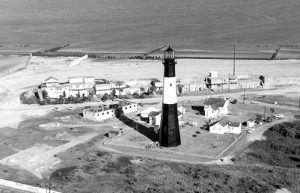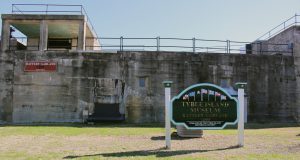
Fort Screven Historic District

Photo courtesy to The Light House Inn bed and breakfast
Fort Screven today is known to us as a location where some of our favorite rentals are located. However, it has some pretty interesting history behind it!
Fort Screven got its name after Brig. Gen, James Screven, who is considered a hero of the American Revolution. Fort Screven was the last coastal fort to be built in Georgia! Many parts of Fort Screven are still standing today and can be seen. Battery Garland, which now is the home to the Tybee Island Museum is a popular tourist attraction!
Back in 1733, when James Oglethorpe founded Georgia, he realized that the North end of Tybee island would be a big value to the military. This is where they were able to guard the mouth of the Savannah River until the end of World War II. In 1786, Georgia Legislature authorized the building of a fort on Tybee Island, however the fort that was approved never actually got built. They ended up building a Martello Tower (a small round fort) around 1815. This fort was built from “tabby” – a concrete made of shell, sand, lime, and water. This stood through the War Between the States where it fell to disrepair.
Both Union and Confederate troops would occupy Fort Screven between 1861 and 1865. Heavy firing from earthwork gun batteries on the north end of Tybee Island breached Fort Pulaski in 1862, signaling the end of the masonry costal fortifications.
During President Cleveland’s administration, Secretary of War, William C. Endicott had ideas for the basis that became the Endicott System – a string of coastal defense that were built to protect most of America’s important port cities. This system called for multiple batteries to be built and spaced out at the entrances to important harbors. This was built a little better than the Martello Tower as they now had the latest heavy artillery and was built from concrete and steel, as well as sand and beach plants. This made it also invisible from the sea.
By this time, there was a threat of the war with Spain. In 1896, they began work on what locals called Fort Tybee. The first military was called Camp Graham, but soon changed to Fort Screven. This became an important military post of the Spanish American War in 1898, however most of the batteries were not complete at this time. The Spanish never had a threat on Savannah and the fort never came under fire.
Fort Screven ended up having seven batteries. Six of which were located on Tybee Island, and the seventh, Battery Hambright, near Fort Pulaski. The only two that are open to the public are Battery Garland, that houses the Tybee Island Museum, and Battery Hambright. The others can be seen from the street but are not available to the public. The museum is open daily (except on Tuesdays) from 9:30am to 5:30 pm. The last tickets are sold at 4:30pm and can be purchased at The Tybee Island Lighthouse, which is located across the street!




